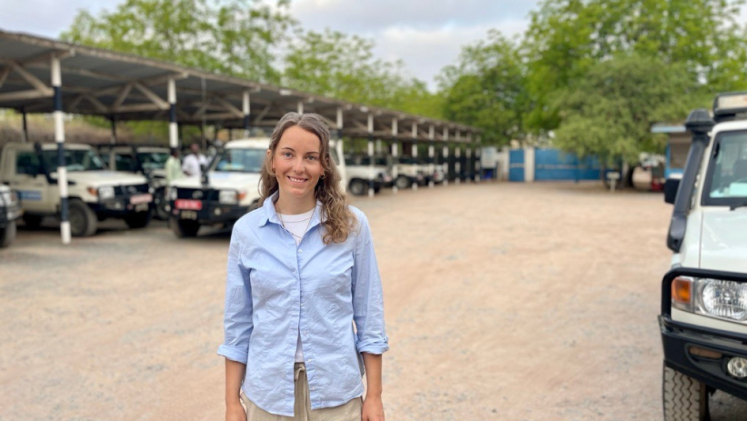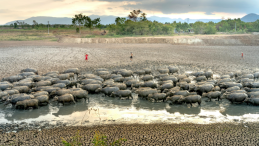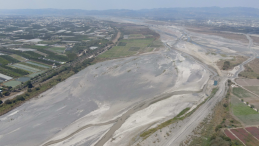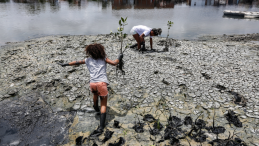Who: Samira Pfeiffer, Research Associate in the Vulnerability Assessment, Risk Management & Adaptive Planning (VARMAP) division of UNU-EHS
When: 26 – 30 January 2025
Where: Dabaab refugee complex, Kenya
Why: To enhance risk knowledge for more actionable impact-based early warning regarding floods and droughts.
In a world where climate and weather-related extreme events are increasingly severe, early warning systems are crucial for saving lives and preventing disasters. However, access to timely, actionable warnings is not equal across communities. The EW4IGAD III project focuses on enhancing flood and drought impact-based early warning, especially for vulnerable groups such as women and girls, people with disabilities and people in camp settings. As part of a joint scoping mission with the UN Office for Disaster Risk Reduction (UNDRR) and the UN High Commissioner for Refugees (UNHCR), our experts Samira Pfeiffer and Dr. Michael Hagenlocher visited the Dadaab refugee complex to assess existing disaster risk measures, identify gaps and engage with refugees, humanitarian partners and local authorities to co-create ideas for inclusive warning mechanisms. In this interview, Samira shares key insights from the mission.
Could you briefly introduce the project?
The EW4IGAD III project aims to develop impact-based early warning systems in the greater Horn of Eastern Africa, with Kenya as a pilot country. Our goal is to shift from warnings about weather conditions to warnings about their real-life impacts, which can help disaster risk management authorities and humanitarian actors take more effective early action. Particularly the project aims to strengthen early warning for and with women and girls, people with disabilities and people in camp settings.
How does impact-based early warning differ from hazard-based early warning?
Hazard-based early warning focus on weather conditions, such as expected flood levels or drought conditions, while impact-based systems also warn for consequences. For example, warning for disproportionate impacts on female-headed farmers who are hit by food insecurities due to crop failures after a drought. This approach can help to tailor responses, so that aid organizations and communities can prepare for specific impacts.
In your contact with vulnerable groups, what were some of the key concerns shared about the impacts of floods and droughts people experienced?
The Dadaab refugee complex faces, for instance, extreme droughts, flash floods, disease outbreaks and fires. Focus group discussions with people living in the camp are concerned about the disproportionate impacts on elderly people, pregnant women and young girls, as well as people with reduced mobilities. For example, the disruption of Water, Sanitation and Hygiene, shortages of basic amenities such as food, lack of healthcare and gender-based violence can be exacerbated during and after such an event for these most-at risk groups.
Why is it important to tailor early warning systems for these groups?
Early warning is crucial for triggering early action to prepare for impacts, but sometimes it can be too generic for taking early action and targeted response. For example, women and girls can face gender-based violence during crises. They can lead to girls dropping out of school, and they can limit healthcare access. By co-producing risk knowledge with affected groups, as we are trying to do, for example through the focus group discussions, we can better account for these impacts in warning information, recommend suitable dissemination channels and inform advisories for early actions.
How can local inputs lead to concrete improvements in early warning?
Community engagement is important for disaster risk knowledge, which is the first pillar of early warning. In the Dadaab refugee complex, youth leaders suggested mapping of the most vulnerable areas and families in the camp to better coordinate evacuations. They also suggested improving social media channels, for example WhatsApp groups with lots of young people in the camp, as there is a lot of information-sharing. The need is not just more information but clearer guidance on actions. Women’s groups emphasized long-term preparedness, such as building dykes, to mitigate recurring floods in the longer term.
What challenges do authorities and humanitarian partners face in disaster response?
Local governments and aid organizations struggle to balance day-to-day humanitarian needs with long-term risk reduction and transformative change. While there is a wealth of data, it is often fragmented and not integrated into contingency planning. Through the EW4IGAD III project we aim to support in strengthening collaboration, integrating impact-based forecasts into existing services and providing capacity-building support at the national and regional level.





